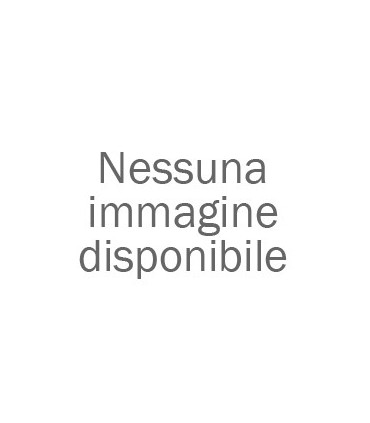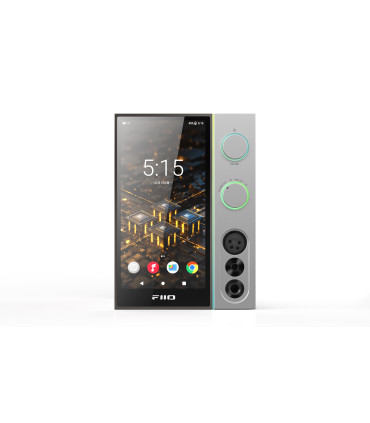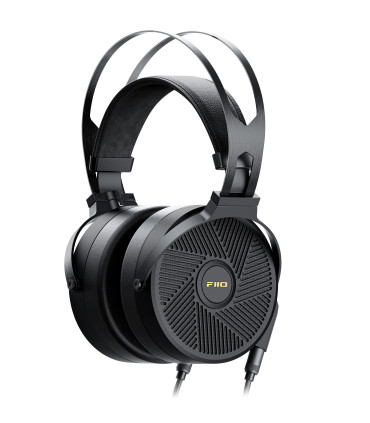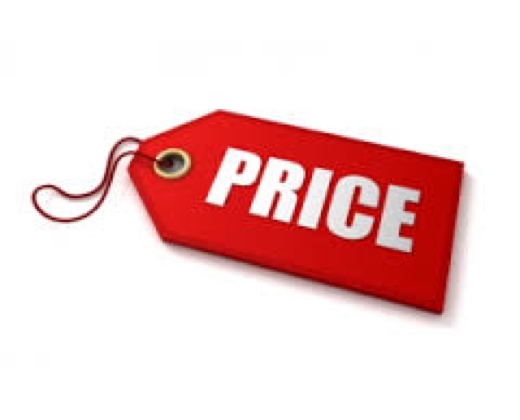B-Stock product, (read below) in excellent condition with original packaging, 2 year warranty.
Intona 7054-X USB 2.0 Hi-Speed Isolator Industrial Version
Now available: world's first in-the-box solution to galvanically isolate the USB 2.0 bus in all speed modes. Low Speed, Full Speed and High Speed. Industrial version. Betters the sound of any PC-USB DAC based Hi-Fi Audio system.
The Intona Hi-Speed Isolator is the worldwide 1st fully-integrated device for the galvanic isolation of the USB 2.0 bus in High-Speed mode @ 480 MBits/s.
In a PC - based audio set-up this product is highly interesting of course, when connecting a DAC to the USB bus. Our device fully isolates both data and power lines and is providing a "clean and stable" USB connection eliminating all potential issues such as ground loops and cross currents.
This is a real noticable and hearable enhancement to any system. 80% of our applications are so far in audio systems (20% industrial) and we have an overwhelming customer reaction when they are using our device for the 1st time.
The device is a simple plug and play solution, no drivers or installation needed, basically it behaves like a cable and supports the 384kHz and even the new 768kHz frequencies. In addition the device is developped, engineered and manufactured in Germany.
The Innovation
Previous isolators where limited to Full Speed (12 MBit/s) and Low Speed (1.5 MBit/s) transmission. This new product is capable of transmitting USB Hi-Speed (480 MBit/s) while providing full galvanic isolation of both the data and the power lines.
USB 2.0 Hi-Speed Isolator withstands up to 2.5kVRMS
This product is an ideal solution to break ground loops, avoid noise coupling and protect ports from power surges and voltage spikes in applications which require high speed USB transfers. The galvanic isolation barrier withstands potential difference up to 2500VRMS.
Features
- Provides galvanic isolation to the USB bus
- Compliant to USB 2.0 Hi-Speed (480 MBit/s)
- Backwards compatible to Full Speed and Low Speed
- Isolation withstands up to 2.5kVRMS
- Advanced ESD protection (15kV IEC Air-gap Discharge)
- Works out of the box, no drivers needed
- Transparent to host and device: wide compatibility to all operating systems, embedded systems and devices
- Works also with hubs and extenders
- Supports all USB-specific transfers and modes
- No additional round-trip latency
- Powered by USB bus, no separate power supply
- Ultra-quiet power rail isolation, linear regulation
- 300mA nominal (500mA max.) output current on isolated side
- Connectors: host-side USB-B; device-side USB-A
- Status LED for each port showing bus state and speed
- Impedance controlled high-speed circuit design
- National compliances: FCC, CE, RCM, ICES-003
- IP 54 ABS housing
- Dimensions: 135 x 90 x 46 mm
- Engineered and manufactured in Germany
Applications
- Industrial automation systems
- Measurement devices
- Environments requiring safety insulation
- Machine protection
- Broadcast and Studio
- Audiophile-grade home systems
- All applications requiring clean and stable USB connections with separate grounds
| Industrial Version | Model Nr. 7054-X | 2.5kV isolation, specified isolation working voltage, extended temperature grade, high retention connectors |
| Flashing | Standby, USB connection not established |
| Double Flashing | Suspend, USB connection established and suspended by host |
| Slow Blinking (~1 Hz) | Low Speed (1.5 MBit/s) data transmission |
| Blinking (~4 Hz) | Full Speed (12 MBit/s) data transmission |
| Fast Blinking (~14 Hz) | High Speed (480 MBit/s) data transmission |
| Permanently On | USB connection established |
Questions and Answers (FAQ)
1. Would the isolator improve the sound quality?
The intended purpose is complete isolation of both data and power lines. Resulting sound quality improvement is the effect of breaking all the noise coming from the host computer.
As this is a true industrial product, we focus primarly professional applications like automation systems, medical and research labs (even the computer manufacturer with the fruit has one).
But of course, as this product is designed for low noise (research labs need this to gain dynamic range vom nanovolts to kilovolts) and perfect signal integrity, we understand your demand.
We have also some pro-audio and pro-video (4k/high frame rate) customers and they successfully solved noise coupling issues completely.
2. What are the specifications of the 7054-X industrial version?
The industrial version has quality connectors and all parts are certified for extended temperature. Finally, every unit has to pass an isolation test with 2,500 volts for some seconds.
3. Does the Isolator affect signal quality?
The 7054-based USB Hi-Speed Isolator is a phy-level receiver/isolator/reclocker/repacketizer working at a bidirectional bandwidth of 480 MBit/s.
It receives and transmits USB data using a dedicated ULPI-transceiver, buffers and translates by our proprietary logic using FPGA technology and isolates using industry-leading RF-type isolators by Silicon Labs with least possible capacitance.
It does not translate or distort data packets like a hub but does reproduce and reclock the original data by 100%.
The circuit is a 50 ohms impedance controlled design. USB traces are matched to 90 ohms differential / 30 ohms single ended. The RMS jitter of the isolated downstream has been measured at 12.5ps.
By using a technology well known in digital communication systems called Spread Spectrum, any harmonics produced through periodic packet transmission (like 8kHz packet noise) could be eliminated.
The isolated side is supplied by our own proprietary and very careful designed DC/DC converter followed by linear regulators. The USB output voltage is generated by the Analog Devices ADP125 linear regulator.
4. Will the Isolator pass DSD Data? Is it bit perfect? Will it pass all higher resolution PCM also?
The Isolator can reach full USB bandwidth of 480MBit/s and it will pass DSD data in a bit perfect manner without changes. This is also true for any other data format and of course for PCM audio. We have successfully transmitted 32 channels at 192kHz in both directions without failure.
5. Why do I need to add a hub to the Isolator to get my device working?
This is a rare case and we are working constantly on compatibility enhancements.
The reason why some customers need a hub after the Isolator is due to the fact that USB reset procedure and handshaking is really complicated. The Isolator does not act as a hub but rather as a cable (of course, without contact). Thus, it has to translate any behaviour of both the connected devices whether right or wrong in a very short time. Once transmission is locked, there is no further reason to expect any improvement by a hub. USB 2.0 High-Speed hub chips are 15+ years old designs and many revisions came along, millions of devices where sold and a lot of competition inevitably raised compatibility. Our implementation is a completely new design from scratch and probably has to go a similar way to reach perfect compatibility.
Update (22-02-2016): Since our latest enhancements to the handshaking procedure, we have reached a statistical compatibility of greater than 99%. For XMOS-based devices, see also the specific question.
6. Does the Isolator come with a USB cable?
A cable is not included. You will need an additional standard A/B USB cable to install the isolator.
We recommend using certified cables, identified by the official USB Hi-Speed logo and TIDxxxxxxxx number printed on a sticker.
7. Is the High Speed Isolator seen as a hub by the computer?
The Intona Hi-Speed USB Isolator does not act as a hub rather than doing transmission on cable level ("phy-to-phy" transmission). Thus, it won't be seen as an extra device on your Computer and there won't be any registry entries on standard systems.
8. Is it possible to update the firmware of the Isolator?
It is possible but unfortunately not outside our factory. If you see any reason in doing an update, please contact the dealer and we will discuss your issue.
9. As per the USB 2.0 specification, all self-powered hubs should provide the ability to turn off power to downstream USB devices. Does the Isolator provide this ability?
The 7054-based Hi-Speed Isolator does not work as a hub and cannot provide a function to power off slave devices.
However, it does support transmission of "suspend" mode. Suspended devices must not draw more than 2.5mA. The isolator itself cannot suspend, so always add 140mA to the overall consumption.
10. How much current will draw the Isolator?
Add ~150mA to the current of the device(s) connected at the isolated side.
11. What is the "NF" option?
In the past we provided a special modification to the LED blinking behaviour of the 7054-based isolator. That is, swapping the "high-speed" indication by the "failure" indication.
As result, the isolator LEDs will not blink when in high speed mode but are constantly on.
As of 2016-06-01, the NF option has been merged to the standard firmware. The isolator will show the connection state by blinking accordingly. After three seconds, both LEDs will be constantly on. This can be seen as a "locked" state.
With other words: all currently sold units have the NF-option on by default.
12. Does the isolator deal with common mode noise? I currently have an *********** USB Filter which reduces the common-mode noise in USB cable. Would your isolator make *********** redundant? In other words, would the galvanic isolation filter out common-mode noise?
The *********** seems to be audiophile stuff. I don't want to say anything bad about this but nobody would ever use something like that in the industry to get better SNR or the like. Guess why.
Using galvanic isolation is more like wireless. There is absolutely no contact with any computer signal.
As there is 1. a complete new and absolutely silent ground and 2. all power regulators are linear, there is no common noise coming from the isolator. All common noise from the computer is being ripped by the isolation barrier.
While developing the isolator, we took special attention to the noise coming from its data and power lines. We managed to keep the noise as low as possible. See attached plot (http://intona.eu/pub/7054_fft_output.pdf) showing measured output noise. That is, what the power supply of your DAC will see. Your DAC has a PSRR of like > 90dB which you can subtract down from these values.
13. There's no off-the-shelf USB isolation chip which supports high speed. I suppose you did some FPGA application inside the isolator. Does the isolator do reclocking and DC-DC conversion?
Yes, it has two FPGAs built in and it does reclocking. It also has a proprietary DC-DC converter followed by a ADP125 ultra-low-noise linear voltage regulator.
Also be aware that power output of the isolator is limited to 300mA with no voltage drop and 500mA max with voltage drop to 4.5V. This may be a gereneral issue with USB-powered devices.
Further, some non-professional users reported that they need to add a hub before or after the isolator. On subsequent tests in our lab, our SDA 'scope showed us clearly that computers with non-certified USB ports have some really big issues that our isolator cannot solve directly. This happens rarely and mostly with very cheap computer hardware. And as said, can be solved using a good hub.
14. Then the quality of the crystal oscillator is important too. Are you using, say, Crystek oscillators?
It is a SiLabs MEMS oscillator, with measured Jitter around 2ps. This is, because 1. we have some customers that need mechanicly rugged hardware because they use our isolators at repeated >2g acceleration 24h/7d - crystals will fail here - and 2. power consumption of MEMS is 1/10 of crystals. As all voltage regulators are linear in the isolator, we had to pay attention to overall efficiency.
Ahem, this clocking thing on USB is an ambivalent issue that I recognize on many forums. All transceiver and hub chips have their own PLLs inside and they all rely on internal RC oscillators to derive the bit clock. We didn't see any change on eye diagrams of the USB bus whether the transceivers where clocked with +-500ps Jittter or +-5ps Jitter on our LeCroy SDA. Anyway, we took special attention to all design aspects and price economy was never a subject.
15. Is there any customization possible, for example using a better oscillator?
What would you expect by using a "better" oscillator?
We measured 12.5ps of RMS jitter on the USB packet clock. A more or less jittery oscillator would not make any difference on this, because of the very low tuned lp-filter in the transceiver's PLL.
We use four clocks in our design, all shifted slightly in phase and affected from natural spread spectrum of the isolator chips and other sources. This really helps to bring EMI down and to spread current peaks – e.g. to lower the packet noise.
If we would tune everything inside to least jitter, this would rise packet noise and also EMI radiation.
One need to distinguish between
- sample clock in an ADC or DAC: low jitter is the most important, because only the right sample at the right time is the right sample
- transmission clock of a serial system: BER (bit error rate) or eye mask to be specified
- clock passing integrated logic: setup and hold times to be met
We decided to go for low noise, so spreading clocks and accepting inter-logic-skew was the way to go. Further, clever design of return currents and also a good and low impedance decoupling network of the power supplies are by far more important to meet your needs than looking for the oscillator.
16. USB 2.0 compliance measurements
As the Intona USV 2.0 Hi-Speed isolator is a design from scratch, not using any ready-made USB isolation chips, we were often asked about USB-compliance, signal quality and clock jitter. On our site, we have published our compliance tests for the isolated side. By the way, all tests passed.
For details on test setup, methodology, and performance criteria, please consult the signal quality test description at the USB-IF Compliance Program. We tested using a LeCroy Serial Data Analyzer. You can find the corresponding test sheet here.
17. Is the Isolator compatible to RME devices?
We have serveral RME units in our lab and prove full compatibility. In some cases, bus-powered products need an external power supply.
Please note following appreciation from Matthias Carstens, head of RME:
Hello Mr. Stämmler,
the isolator arrived this morning. I tested it right away:
- It’s fully compatible with all RME USB interfaces, regardless of whether they’re working in interrupt or isochronous modes. The test was carried out with the maximum channel count. Also, I've flashed the device with a new firmware via USB. No problem at all.
- The power supplied to the device end is surprisingly high. Our bus-powered interfaces Babyface and Babyface Pro overload the isolator anyway, so you’ll have to work with it there on an external power supply. This was to be expected, because at 550 and 800 mA we’re drawing considerably more power than originally planned of course.
- The isolator does exactly what I had hoped it would: it eliminates all problems arising via USB during unbalanced test setup.
I’ve attached two screenshots for you. Two USB audio interfaces were connected to a notebook here (one wasn’t from RME). On one device the analysis software emitted a test signal (1 kHz sine wave), on the other device it was analyzed at the input. The analog connection Out to In is unbalanced. Once with the isolator, once without.
I’ll share this information and the images with you. So if you want to show somewhere that RME has found the isolator to be fully compatible, or want to use the measurements on the website or as visual aids in your presentations, then you’re welcome to do so free of charge.
Best regards,
Matthias Carstens
RME
18. Is the Isolator compatible to my XMOS-based device? Berkeley, Bricasti and Mutec?
Some XMOS-based devices follow a non-standard reset procedure.
We added a workaround for this into the firmware of all 7054-based isolator devices purchased from 08-01-2016.
We have also added compatibility for Berkeley, Bricasti and Mutec since 02-2016.
19. Is it possible to power the USB Isolator with a linear power supply instead of the PC USB +5V bus?
This would be possible if you use an external adapter cable which does split the supply.
But please note:
Internal voltages are generated by linear regulators. The isolated side is supplied by our own proprietary and very careful designed DC/DC converter followed by linear regulators.
The isolated USB output voltage is generated by the Analog Devices ADP125 linear regulator.
Because of the isolation barrier, this is really always the same low noise independent from host/computer cable type.
20. I chose your isolator over ***** in that I believe your design is superior and it has more intellectual value. ***** claims it can reduce 8KHz packet noise and does impedance matching. I'm wondering whether your isolator also addresses these two issues. BTW, do the two issues matter for USB audio?
Our design is completely impedance controlled, also for the tight rules of USB 2.0 which is 90 Ohms for diff/odd and 45 even. We are experts in high speed circuit design with many years of experience.
I am aware of this packet noise issue in the audiophiles world. I must say, i never heard about that in the professional world. Correct designed ADC/DAC does not complain or suffer about this. I guess this IS a big issue in the audiophiles world because many hobby designers fail in high speed circuit design, which is also true for analog (audio stage).
Okay, nevertheless, we measured this 8 kHz thing early in design stage and did optimize accordingly. See attached power supply plot (http://intona.eu/pub/7054_fft_downstream.pdf) for full downstream utilization using a RME Fireface UC, 8 channels at 192 kHz. There is simply nothing to see at 8 kHz (< 145dBu). So, this is what they wanted with ***** but failed.
Of course, this 8 kHz thing may appear again in a badly designed device after its USB transceiver.
Here is a cite from myself to a customer some weeks ago:
+-+-+
At Intona, our business nature is Professional Audio. Thanks to our fully equipped audio lab, we had the chance to take special attention keeping the noise of the power supply output as low as possible in the 20-20k range and we also optimized current flow using a high-speed current sensor probe that resulted in the probably industrial-wide lowest 8 kHz packet noise. We also did ensure the compatiblity to UAC 2.0 devices. Lastly, both XMOS-based and RME interfaces are tested and found 100% compatible to our high speed isolator product as it supports the full bandwidth of 480 MBits.
+-+-+
21. does your Isolator has a "break-in" period? I know capacitors need time to "loosen up".
Due to the industrial target for this product, we use very high quality and long life capacitors. In case of electrolytics, these are Panasonic FP Industrial and in case of multi-layer ceramics, these are high-tech parts from including Samsung Electro-Mechanics America dedicated for high speed signalling. We also always use thin-film resistors in our linear regulators. From industry-view, there will (hopefully!) no change in terms of break-in for years. But from audiophiles view, these will (hopefully!) smooth out for your ears.






![Topping MX5 Amplifier Merus MA12070 Class D NFCA XMOS Bluetooth aptX HD [b-Stock]](https://www.playstereo.com/19456-home_default/topping-mx5-amplifier-merus-ma12070-class-d-nfca-xmos-bluetooth-aptx-hd-b-stock-.jpg)






![Heed Audio Canamp II Headphone Amplifier [ex-demo]](https://www.playstereo.com/23457-home_default/heed-canamp-ii-headphone-amplifier-ex-demo-.jpg)
![Heed Abacus S DAC Digital to Analogue Converter [ex-demo]](https://www.playstereo.com/23380-home_default/heed-abacus-s-dac-ex-demo-.jpg)






















Leave a review